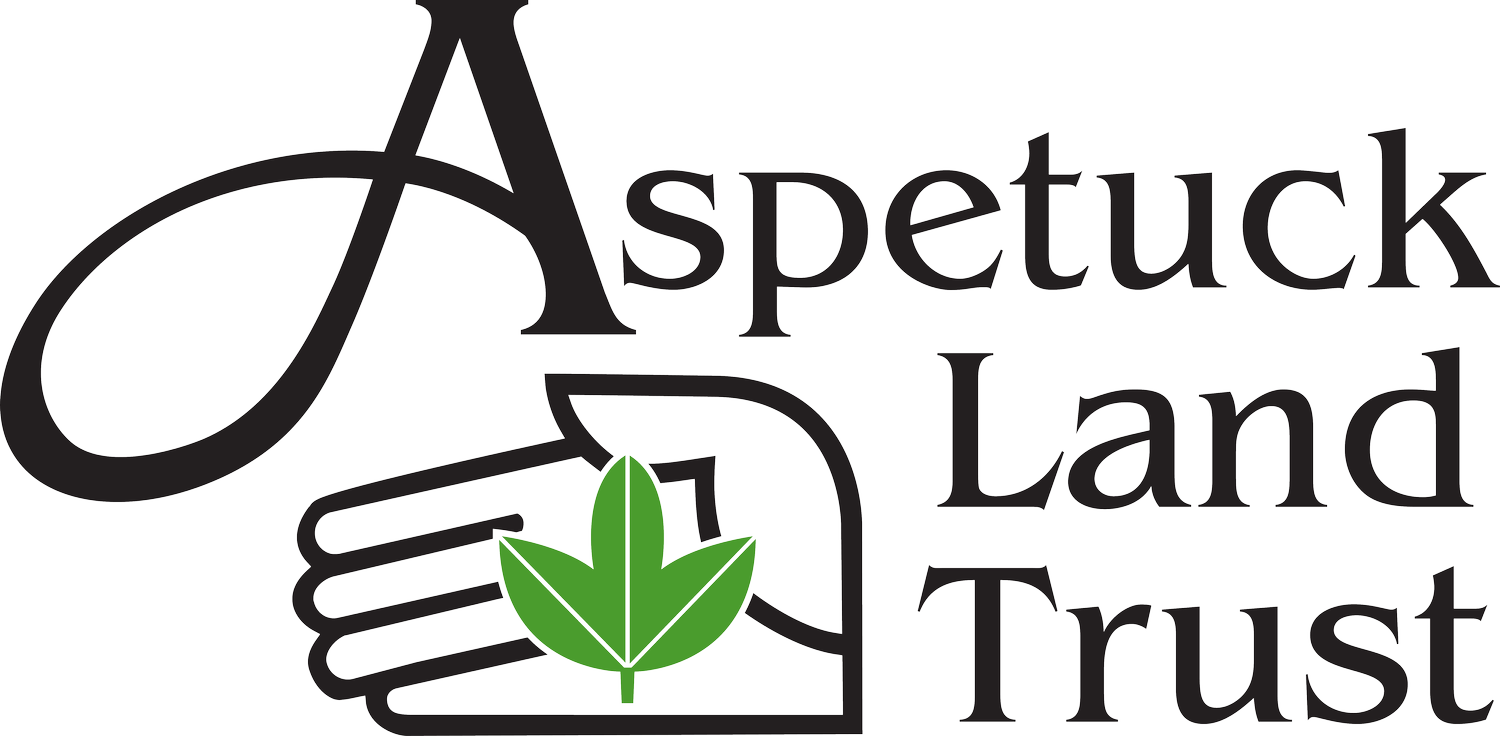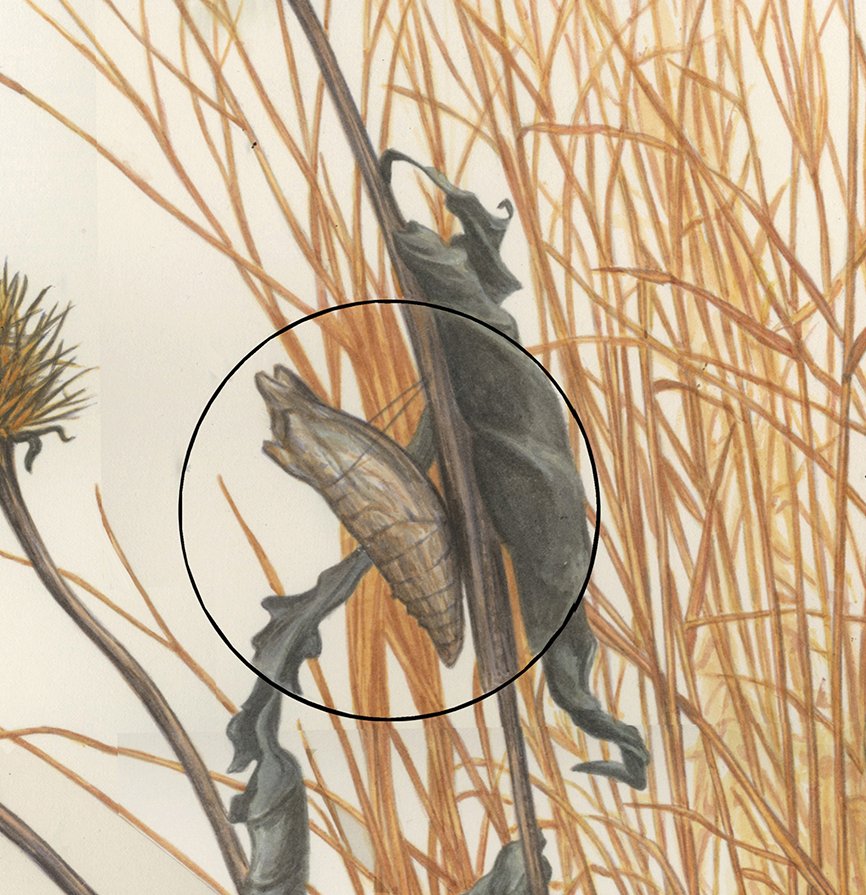
4. Black swallowtail butterfly chrysalis
Papilio polyxenes | When you “leave the leaves,” rather than discarding them after raking, and pile branches and plant stems in the garden, they can provide habitat for pollinators like the black swallowtail butterfly. Notice how the butterfly disguises its chrysalis as a dried leaf.
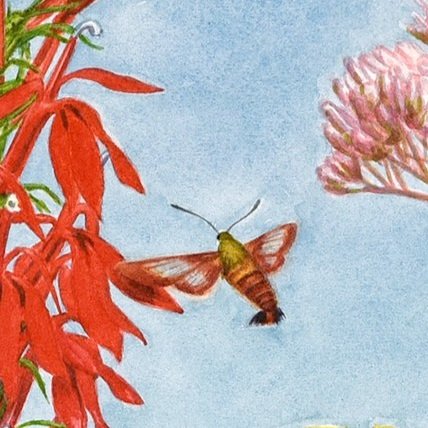
2. Hummingbird clearwing moth
Hemaris thysbe | A hummingbird look-alike, clearwings are active during the day and they feed on nectar sources like cardinal flower – not with a tongue and bill, of course, but with an insect proboscis.
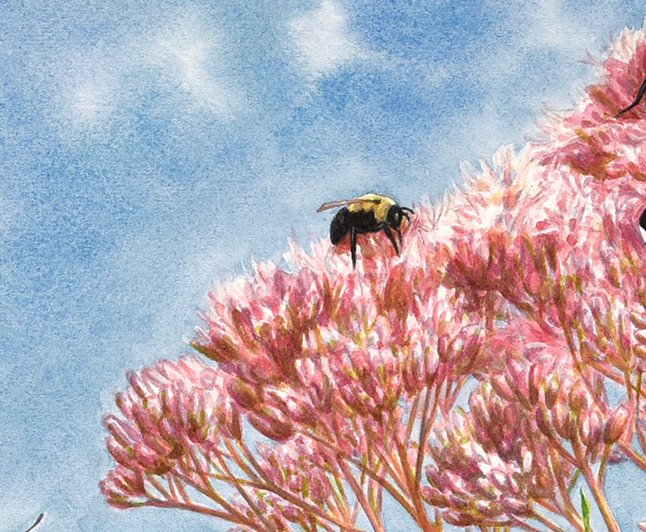
3. Bumble bee
Bombus sp. | While the United States is home to 46 species of bumble bees, and Eastern bumble bees (Bombus impatiens) are common sightings, four types of bumblebees are currently recognized as endangered or at risk by scientists. The good news: many citizens have mobilized to track and record data on these insects through Bumble Bee Watch and Beecology.
A simple way to support these species is to limit or stagger your mowing regimen. Keeping off from mowing in the summer months provides an opening for red clover and other vital nectar plants.

4. Eastern tiger swallowtail butterfly
Papilio glaucus | These majestic butterflies are nourished not only by drinking nectar but also from “puddling,” where a group of butterflies gather at a natural water source. They obtain essential nutrients like sodium ions and amino acids from these sips. Like the tiger swallowtail, we all need both food and water to survive!

Small Insects (5, 6, 9): Hover Flies and Green Sweat Bee
While hover flies mimic the coloration of bees and wasps, they have compound eyes and a single pair of wings — they aren’t deceiving us! They don’t carry as much pollen as a bee but they visit flowers more frequently. Note that there are several species of hover flies, including Allograpta obliqua and Eristalis transversa (shown).
Green sweat bees (Agapostemon sp.), meanwhile, have an iridescent appearance that’s all their own. They arrive in two generations each summer, a balancing act of mating, nest digging, hibernation, and feeding on nectar.
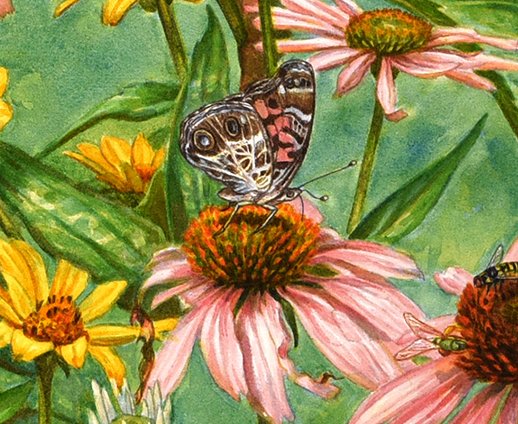
7. American lady butterfly
Vanessa virginiensis | While you’re likely to see an American Lady visiting flower nectar, you’ll only see the caterpillars feeding at night. The caterpillars weave together leaves from their host plant with silk to create a nest — their daytime hiding place.
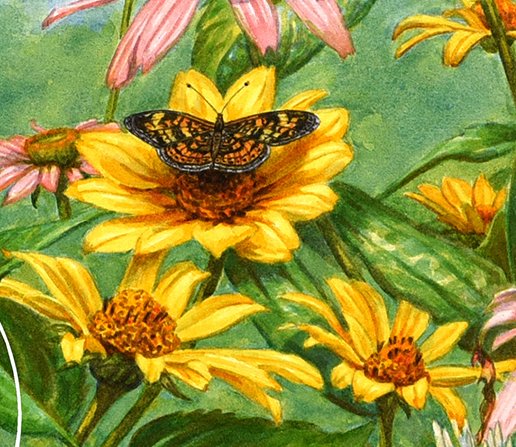
8. Pearl crescent butterfly
Phyciodes tharos | Like many butterflies, the pearl crescent’s chosen habitat is open areas. Aspetuck Land Trust’s preserves contain these larger pastures, fields, and meadows, but we’re redefining the way we steward unprotected land: the edge of your yard or your flower planting can be the stepping stone that connects the pearl crescent to larger open spaces.

10. Black swallowtail butterfly caterpillar
Papilio polyxenes | The larvae of the black swallowtail metamorphose (change their shape and appearance) several times, from scary-looking black and white to green with yellow and black markings. Its current form is sometimes confused with the Monarch caterpillar. Our advice? Always check the host plant – you won’t find Monarchs feeding on Golden Alexanders or other plants in the parsley family, just as you won’t find black swallowtail caterpillars eating milkweed.

11. Monarch butterfly
Danaus plexippus | Did you now that the Monarchs that we see in Connecticut migrate to central Mexico each year?I t’s a long journey. Our properties can not only provide the milkweed that Monarch caterpillars need at the beginning of the summer, but also the late-summer nectar to power the adult Monarchs in their migration between August and October.
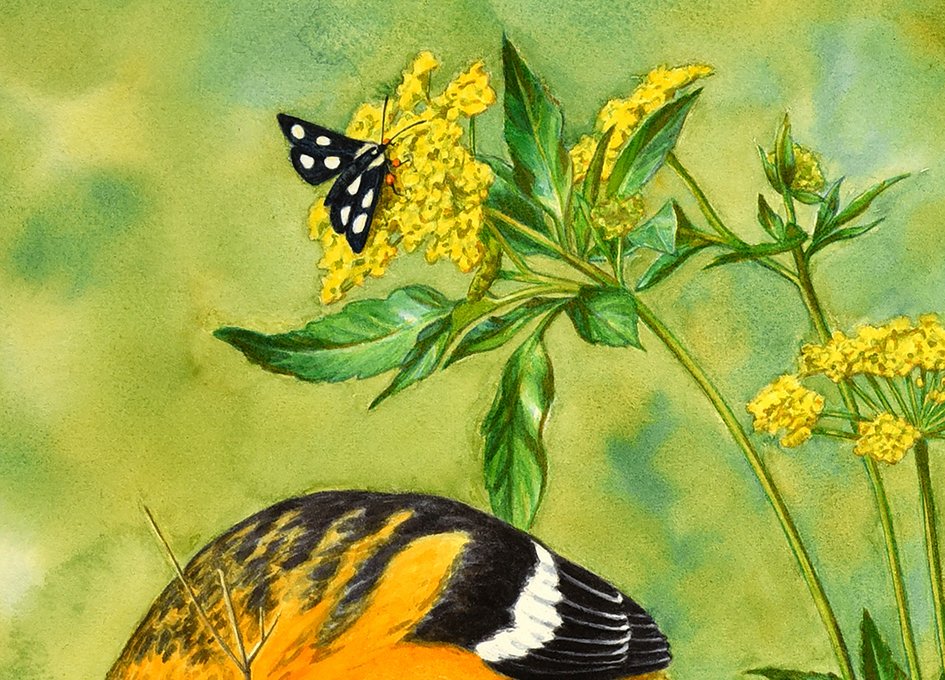
2. Eight-spotted forester moth
Alypia octomaculata | Found at the borders of wooded and open areas, the moth could easily be mistaken for a butterfly because it flies during the day and feeds on flower nectar. Open areas provide food, while wooded areas provide habitat.
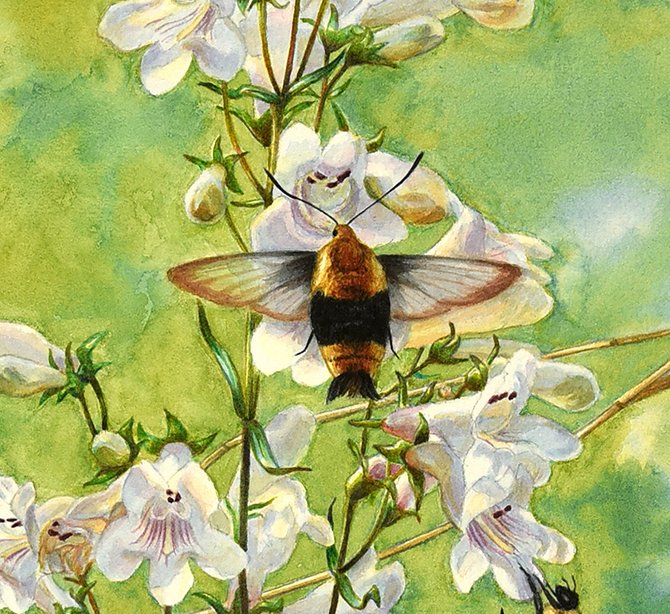
3. Snowberry clearwing moth
Hemaris diffinis | A bumble bee look-alike, Hemaris can hover in the air while searching for nectar. They emerge from cocoons in early spring, unrolling their long tongues to visit flowers like beardtongue and honeysuckle.
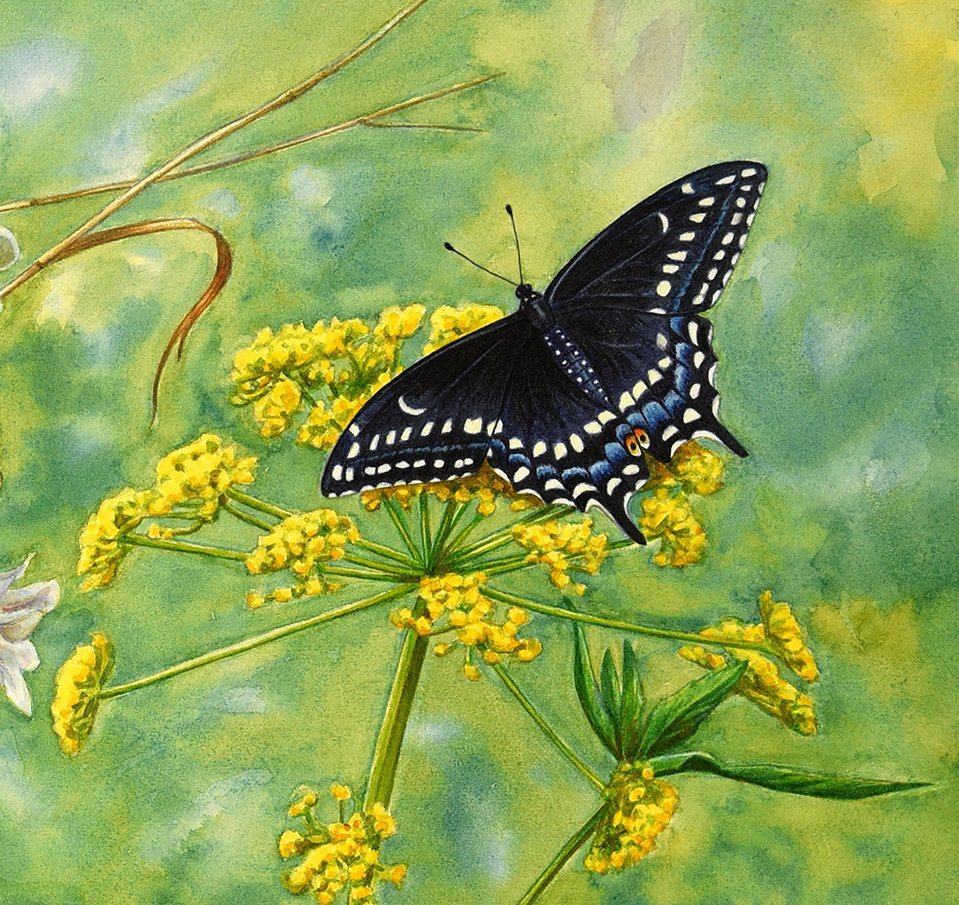
4. Black swallowtail butterfly
Papilio polyxenes | Swallowtail caterpillars feed on plants in the parsley family, including Golden Alexander— which poses as its poisonous cousin the wild parsnip to avoid deer browsing. The adult butterfly can visit Zizia, among other plants, for nectar.
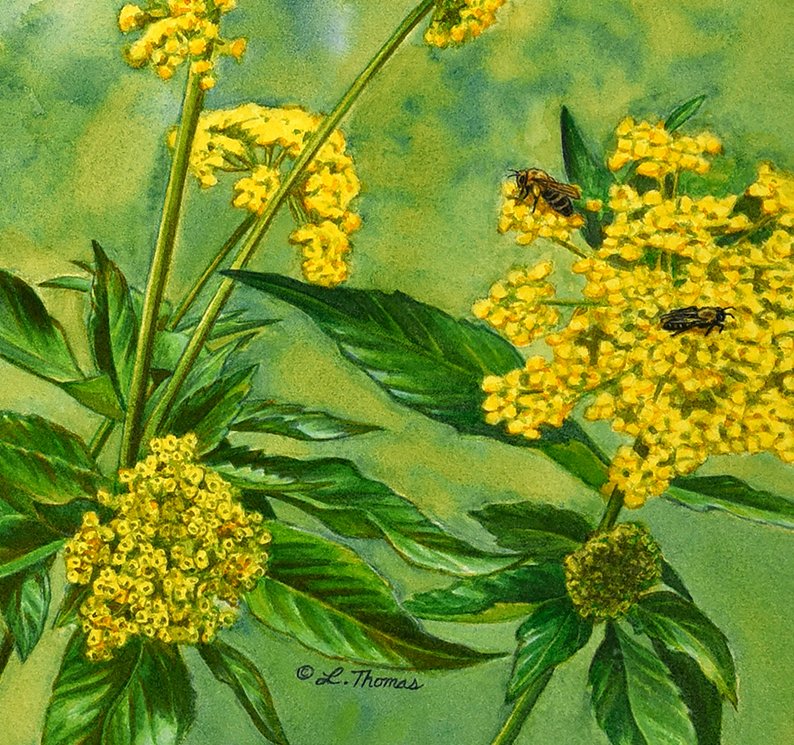
5. Mining bee
Adrena sp. | Mining bees are picky eaters, visiting only certain species to collect pollen for their developing larvae. Dr. Doug Tallamy encourages us to plant the natives like Zizia aurea that meet the requirements of these insect “specialists.”
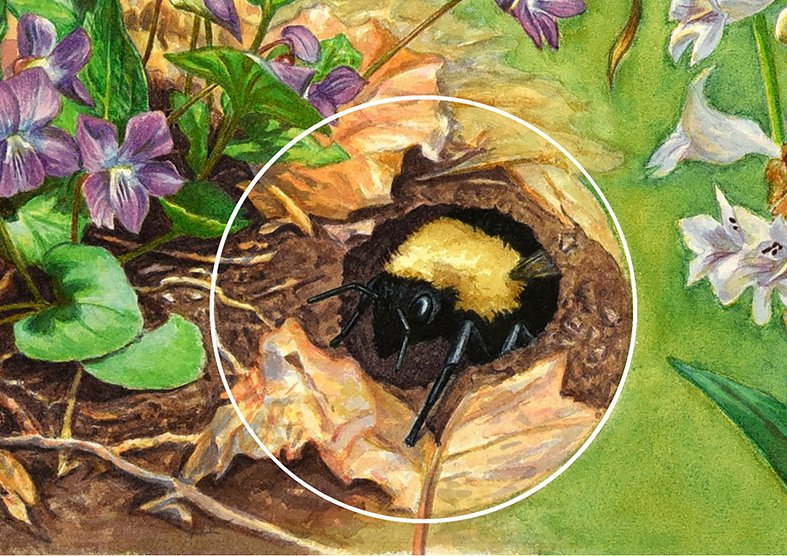
6. Bumble bees including queen
Bombus sp. | A mated queen bee burrows an inch or two into the earth at the end of summer, sheltering in leaf litter. In the spring, she emerges from hibernation and seeks pollen and nectar to support the colony’s growth. Does this inspire you to “leave the leaves” in your yard this fall? Supporting species is a year-round affair.
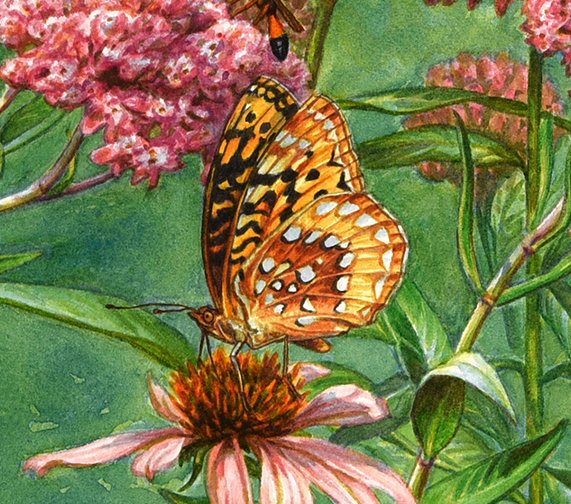
12. Great spangled fritillary butterfly
Speyeria cybele | After an adult female butterfly lays eggs in late summer, caterpillars hatch — and then don’t feed until spring. But the adult butterflies will feed on nectar all summer!
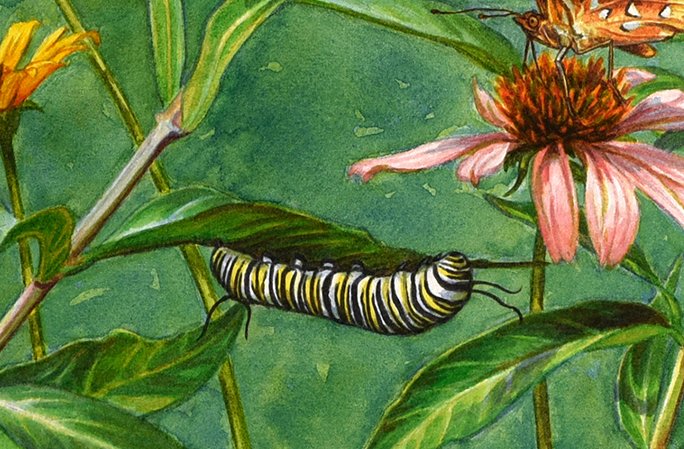
13. Monarch butterfly caterpillar
Danaus plexippus | One of our most beloved butterflies, the Monarch has declined in population, and was listed as “endangered” in July 2022. However, so many government agencies, nonprofits, and citizens have banded together to expand food and nectar sources (across roadsides, urban gardens, butterfly gardens, and preserves) and hopefully ensure their long-term survival.
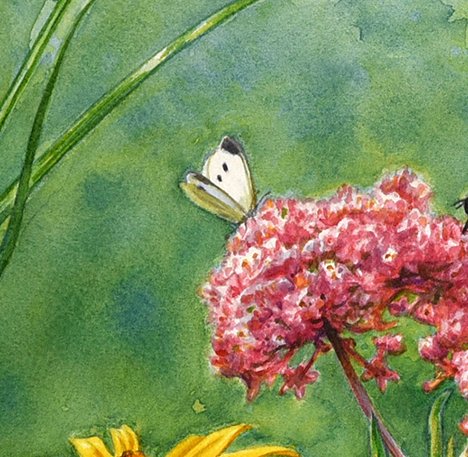
14. Cabbage white butterfly (female)
Pieris rapae | A textbook non-native species, the cabbage white butterfly was introduced to North America from Eurasia in 1860 and has been the bane of cabbage farmers ever since. Its caterpillars eat vegetables like cabbage, broccoli, kale, and cauliflower. But a pest management strategy that uses biological controls like the butterfly’s natural enemies and avoids pesticides, has been successful.
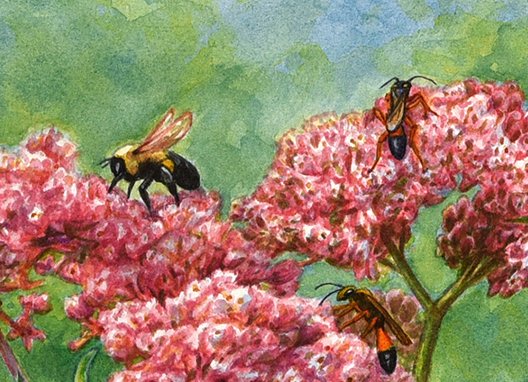
15. Great golden digger wasp
Sphex ichneumoneus | Fear not, these wasps are nonaggressive and burrow into the ground to form their nests. In fact, they perform many beneficial services: eating grasshoppers, aerating the soil as they burrow, and pollinating flowers.


















